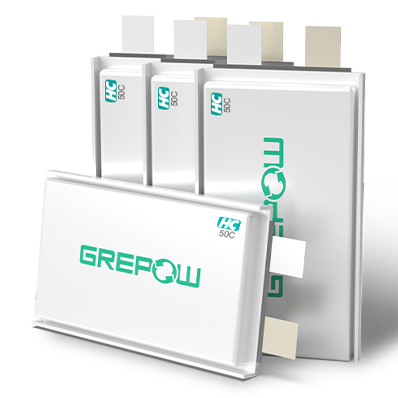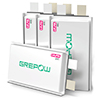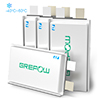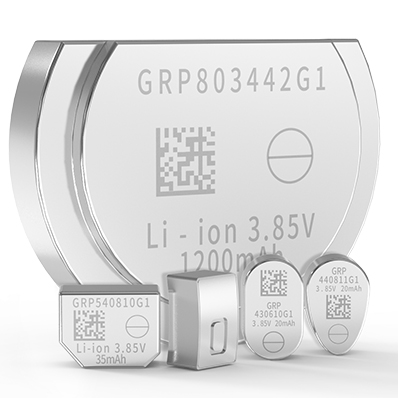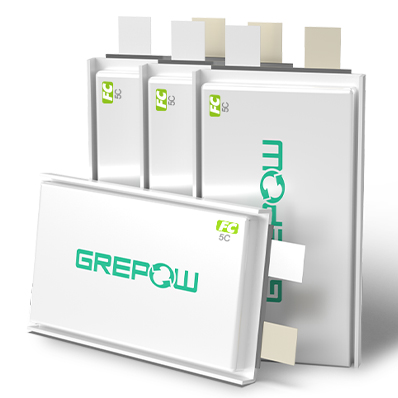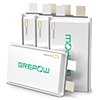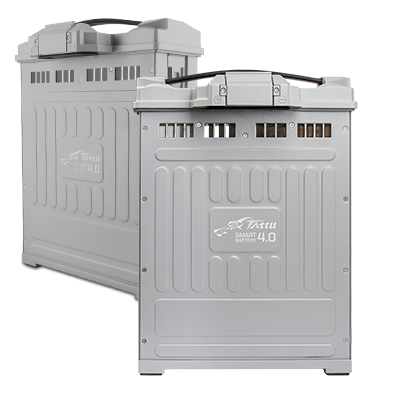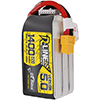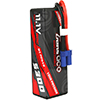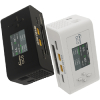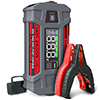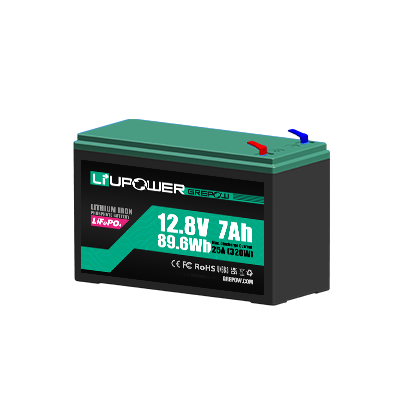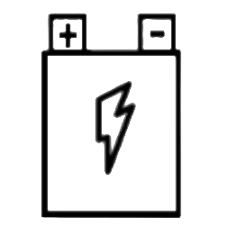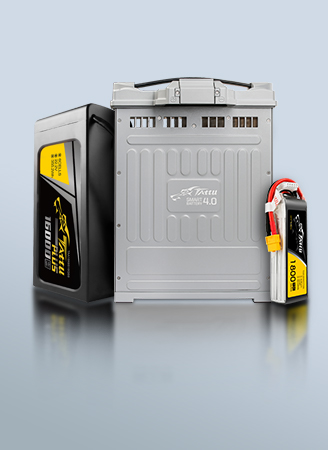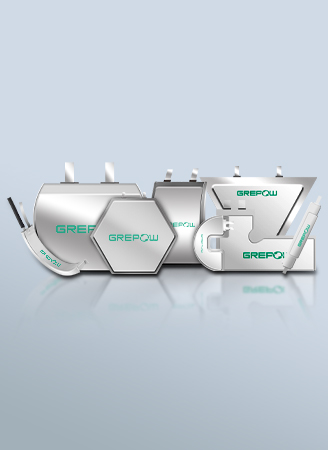Practical Guide to 6S LiPo Batteries for Drones & RC Models
If you're stepping up to faster drones or more powerful RC cars, you'll likely encounter " 6S LiPo battery ". These are popular because they pack a serious punch, offering lots of power (voltage) in a relatively small and light package. Understanding how they work, how to charge them safely, and how to care for them is crucial for getting the most out of your models and staying safe. This guide will walk you through everything a beginner needs to know. Let’s dive in and boost your RC performance with confidence.
1. What Exactly Is a 6S LiPo Battery?
●"6S" means 6 Cells in Series: Think of it like stacking six smaller batteries (called "cells") end-to-end inside one package.
●Voltage Boost: Each individual LiPo cell has a baseline voltage of about 3.7 volts (V). Connecting them in series ("S") adds their voltages together.
6 cells×3.7 V/cell=22.2 V (This is the "nominal" or average voltage)
●Why Higher Voltage? More voltage generally means more power and speed for your drone's motors or RC car. It allows for faster acceleration and higher top speeds compared to lower-voltage batteries (like 3S or 4S).
2. Understanding the Voltage: Your 6S LiPo Battery's "Fuel Gauge"
A 6S LiPo doesn't stay at 22.2 V. Its voltage changes as you charge and use it. Knowing these numbers is key:
● Fully Charged: 25.2 V (Each cell is at 4.2 V) - This is 100% full.
● Nominal Voltage: 22.2 V (Each cell is at 3.7 V) - This is the midpoint, often used for labeling.
● Storage Voltage: 22.8 V (Each cell is around 3.8 V) - The safest voltage for storing your battery when not in use for more than a day or two.
● Danger Zone / Minimum Safe Voltage: This is the lowest voltage you should let your battery reach per cell. Crucially, this value varies between manufacturers and battery types. While 3.0 V used to be a common guideline, many manufacturers now recommend not going below 3.5V per cell (6s lipo battery with total 21v), or sometimes even higher. Letting cells drop below the manufacturer's recommended minimum can cause irreversible damage and reduce battery life. Always check the instructions or datasheet that came with your specific battery for its minimum safe discharge voltage. Most drones and Electronic Speed Controllers (ESCs) have a low-voltage cutoff (LVC) feature you should set according to your battery manufacturer's recommendation.
Key Tip: Good chargers show the voltage of each individual cell. They should all be very close (within 0.05 V) when charged or discharged. This is called "balancing."
3. 6S LiPo battery Capacity (mAh), C-Rating, and Current: Runtime vs. Power Output
3.1. Capacity (mAh): How Long Can It Run?
● Think of it like a fuel tank: Measured in milliampere-hours (mAh). A higher mAh number means the battery holds more energy.
● Example: A 5000 mAh battery can theoretically deliver 5000 milliamperes (or 5 amperes) for one hour.
● Trade-off: More mAh means longer flight/run times, BUT it also means a bigger, heavier battery. You need to balance runtime needs with the weight your drone or RC can handle.
3.2. C-Rating: How Fast Can It Deliver Power?
● Think of it like the fuel pipe's width: The C-rating tells you the maximum rate at which the battery can safely discharge its energy. This is crucial for power-hungry motors.
● Calculation: Max Continuous Amps = C-Rating × (Capacity in mAh / 1000)
● Example: A 5000 mAh battery with a 50C rating can theoretically deliver: 50×(5000/1000)=50×5=250 Amperes continuously.
● Why it Matters: If your motors try to draw more amps than the C-rating allows, the battery can overheat, puff up, lose performance, or even fail. Always choose a C-rating that comfortably exceeds your model's maximum power draw.
3.3. What is the Current of a 6S LiPo Battery?
It's important to understand that a 6S LiPo battery doesn't have a single fixed current value. Instead, it has a maximum potential continuous current it can safely deliver, determined by its Capacity (mAh) and C-Rating (as calculated above).
● Maximum Potential Current: This is the number calculated using the C-rating (e.g., 250A for the 50C, 5000mAh example).
● Actual Current Drawn: The current that actually flows from the battery depends on what your drone or RC car's motors and electronics demand at any given moment. Cruising gently uses less current; punching the throttle uses much more.
● The Goal: Ensure the battery's maximum potential current (based on its C-rating) is higher than the actual maximum current your device will ever draw.
3.4. Interpreting C-Rating for Charging
● You'll also see C-ratings related to charging. For maximum battery lifespan and safety, always follow the 0.5C rule for charging, unless you are experienced AND your specific battery instructions explicitly state it can handle faster rates.
● 0.5C Charge Rate: This means charging at a current equal to half the battery's capacity number.
· Example: For a 5000 mAh battery, 0.5C is 5000/1000×0.5=2.5 Amperes (A).
· Time: Theoretically, charging at 0.5C takes about 2 hours to go from empty to full. Charging at this slower rate is generally gentler on the battery chemistry.
● 1C Charging: Some users opt for 1C charging for speed.
· Example: For a 5000 mAh battery, 1C is 5 Amperes (A).
· Time: Theoretically, this shrinks the charge time to about 1 hour. While often acceptable (check battery specs!), it may slightly reduce the overall number of cycles the battery lasts compared to 0.5C charging.
4. Common Types of 6S Batteries You Might See
● LiPo (Lithium Polymer): The most common for performance RC.
· Pros: Higher power energy density, Lightweight, high C-ratings (lots of power output), various shapes/sizes.
· Cons: More sensitive to damage, over-discharge, and improper charging; lifespan can be shorter than others.
● Li-ion (Lithium-Ion): Often found in cylindrical cells (like 18650s) sometimes built into packs.
· Pros: Higher energy density (more capacity for the weight), generally safer chemistry than LiPo.
· Cons: Lower C-ratings (less power output), heavier than LiPo for the same power output. Better for long-range, lower-power applications.
● LiFePO? (Lithium Iron Phosphate): Less common in high-performance RC.
· Pros: Very safe chemistry, long cycle life.
· Cons: Lower voltage per cell (a 6S LiFePO? pack is only around 19.2 V nominal), heavier, lower energy density.
● High-Discharge vs. Standard Packs (LiPo):
· High-Discharge (e.g., 75C-120C): Needed for demanding uses like drone racing or high-speed cars where motors pull huge amounts of current instantly. Often more expensive.
· Standard (e.g., 30C-65C): Perfectly fine for general flying, freestyle drones, crawling RC cars, or models that don't need extreme peak power.
· Be Wary: Extremely high C-ratings (above 100C) can sometimes be exaggerated marketing. Stick to reputable brands.
5. Where Are 6S LiPo Batteries Used?
Their high voltage makes them ideal for:
● Larger Drones: Cinewhoops, 5-7 inch freestyle quads, aerial photography platforms.
● High-Performance RC Cars & Trucks: Especially 1/8th scale buggies and monster trucks needing high speed and torque.
● RC Boats: Where higher voltage translates directly to prop speed.
● EDF Jets (Electric Ducted Fan): These require significant power.

6. Charging Your 6S LiPo Battery: The MOST Important Safety Steps!
This is critical. Improper charging is the #1 cause of LiPo fires.
6.1. Get the Right 6s Lipo Battery Charger:
● You NEED a balance charger specifically designed for LiPo batteries and rated for at least 6 cells (6S).
● Don't cheap out! Reputable charger brands.
● Ensure your charger's power supply (AC adapter or separate DC supply) can provide enough wattage for your desired charge rate (Volts × Amps = Watts).
● Smart Chargers: Some modern chargers (like the Gens ace iMars D1000 chargers using G-Tech) can automatically recognize compatible "smart" G-Tech batteries,
detect the type (LiPo, LiHV, LiFe, NiMH), and potentially set appropriate
charging parameters, simplifying the process. However, you should still
understand the basics and double-check settings.

6.2. Safe Charging Procedure (Follow EVERY Time):
01. Cool Down First: Never charge your 6s lipo battery immediately after use if it feels warm or hot. Let it cool down to ambient room temperature first. Charging a hot battery increases risk and degrades its lifespan.
02. Safe Location: Charge in a fire-resistant area (concrete floor, metal table) away from anything flammable (paper, curtains, wood).
03. Use a LiPo Bag/Box: Always place the battery inside a fire-resistant LiPo charging bag or ammo box during charging.
04. Connect Balance Lead FIRST: Plug the small white balance connector from your battery into the correct port (6S) on your charger before connecting the main power lead.
05. Connect Main Lead: Plug the battery's main power connector (e.g., XT60, XT90) into the charger.
06. Charger Settings (Manual Mode):
· Select LiPo Battery Type.
· Select Balance Charge Mode. (This ensures all 6 cells charge evenly - vital!)
· Set Cell Count to 6S.
· Set Charge Current (Amps): Use the 0.5C rule for best lifespan. (e.g., 3 A for a 6000 mAh pack). Only use 1C (e.g., 6 A for 6000 mAh) if speed is essential and you accept potentially slightly shorter battery life (and your battery specs allow it). Lower is always safer if unsure.
07. Start Charging & SUPERVISE: Begin the charge cycle. NEVER leave charging LiPo batteries unattended. Stay within earshot and check on them periodically. Feel the battery – it should only get slightly warm. If it gets hot or starts puffing, stop charging immediately!
08. Completion: The charger will beep when done. Disconnect the main lead first, then the balance lead.
7. How to Storage and Handle 6S LiPO Battery?
● Storage Charge: If you won't use your 6s LiPo battery for more than 2-3 days, use your charger's "Storage" function. This brings each cell to ~3.8-3.85V (totally 22.8~ 23.1v) , the ideal voltage for long-term health. Never store LiPos fully charged or fully empty!
● Storage Location: Store batteries in a cool, dry place (around room temperature is fine). Keep them inside a LiPo bag or ammo box, away from flammable materials.
● Inspect Regularly: Before and after each use, check for:
· Puffing/Swelling: Any puffiness means the battery is damaged. Retire it safely.
· Physical Damage: Dents, deep scratches, torn wrapping, damaged wires/connectors.
· Heat: Excessive heat after use can indicate a problem or that the battery is working too hard (C-rating might be too low).
● Handling: Don't drop them. Never let loose metal objects touch the connectors (risk of short circuit!).
8. Spotting and Dealing with Damage
● Puffed Battery = Bad Battery: If a 6s LiPo battery swells up (puffs), it's internally damaged, likely due to over-discharge, over-charging, overheating, or physical impact. Do NOT attempt to charge or use a puffed LiPo. It's a fire hazard.
● Over-Discharge: If you accidentally run a battery below the manufacturer's recommended minimum voltage per cell (e.g., below 3.5 V), it might be permanently damaged. It may not hold a full charge, have reduced capacity, or be unsafe to use. Some chargers might refuse to charge a severely over-discharged pack.
● Disposal: Damaged or dead LiPos need careful disposal.
01. Discharge them FULLY (using your charger's discharge function to 0V, or a carefully researched resistive load like a lightbulb rig).
02. Submerge them in saltwater for several days to ensure they are inert (optional but recommended by some).
03. Take them to a battery recycling center or hazardous waste facility. Do NOT put them in regular trash.
9. How Long Should My 6S LiPo Battery Last?
● Cycle Life: A well-cared-for LiPo might last anywhere from 150 to 300+ charge/discharge cycles. Some premium packs might do better, but real-world results vary greatly.
● Factors Affecting Lifespan:
· Heat: Avoiding excessive heat during use, charging, and storage is key. Never charge a hot battery.
· Over-Discharge: Repeatedly running below the recommended minimum voltage/cell shortens life significantly.
· Storage: Storing fully charged or empty degrades them faster. Always use storage voltage!
· Charge Rate: Consistently charging above 1C (or the manufacturer's recommendation) can reduce lifespan. Sticking to 0.5C is generally best for longevity.
· Physical Damage: Impacts shorten life.
10. How to Choose the Best 6S LiPo Battery for You
01. Confirm 6S Need: Does your drone/RC specifically require or recommend a 6S battery? Check the manual or manufacturer specs.
02. Capacity (mAh): Decide on your desired flight/run time versus acceptable weight. Look at what others use in similar models.
03. C-Rating: Estimate your model's maximum current draw (ask experienced users or check forums for your specific drone/car motor/ESC combo). Choose a C-rating with some headroom (e.g., if you need 80A max, choose a pack rated for at least 100A continuous).
04. Minimum Discharge Voltage: Note the manufacturer's recommended lowest voltage per cell for setting your LVC.
05. Physical Size & Weight: Will it fit in your model's battery bay? Check dimensions (L x W x H) and weight specs.
06. Connector: Does it have the right main power connector (XT60, XT90, EC5, etc.) for your model's ESC?
07. Brand Reputation: Stick with well-known, reputable RC battery brands. They generally offer more consistent quality and accurate ratings. Read reviews!
11. A Note on Custom 6S LiPo Batteries
For highly specialized projects (unique shapes, integrated electronics),
companies exist that build custom battery packs. This is usually beyond the
scope for beginners but good to know it's an option for advanced builders
(companies like Grepow offering these services).
Conclusion: Fly Safe, Fly Smart!
The 6S LiPo battery offers fantastic performance, but they demand respect and
careful handling. By understanding their voltage limits (especially the
minimum!), capacity, C-ratings, and the importance of proper charging (cool down
first, use 0.5C, balance charge, supervise!) and storage procedures, you'll
ensure safer operation, longer battery life, and more enjoyment from your RC
hobby. Always prioritize safety and consult your battery's specific
instructions. Happy flying (or driving)!
Related articles:
What Is a 6S LiPo Battery?
4S vs 6S LiPo battery: What’s the Difference?
Exploring LiPo Battery Connector Types
How to Choose a LiPo Battery Charger?
Related Articles
-
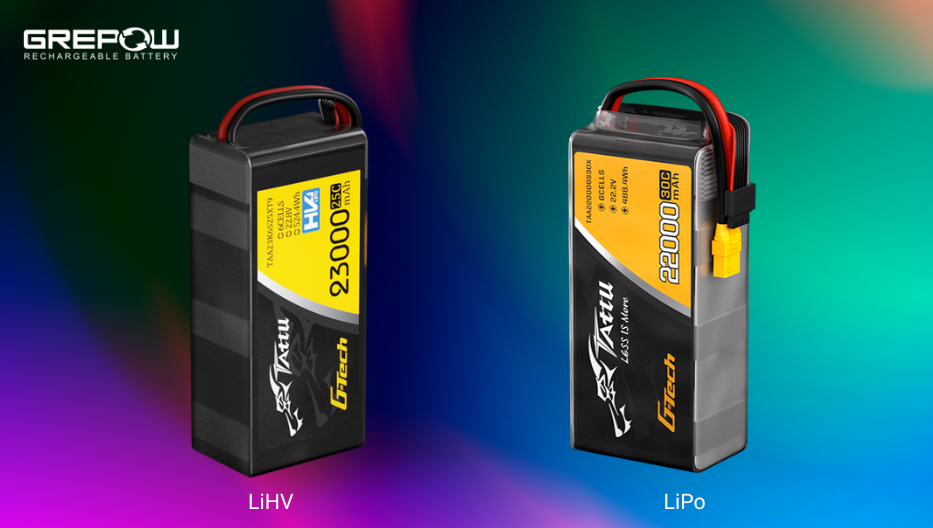
LiPo battery vs LiHV battery: what’s the difference?
2025-07-16 -
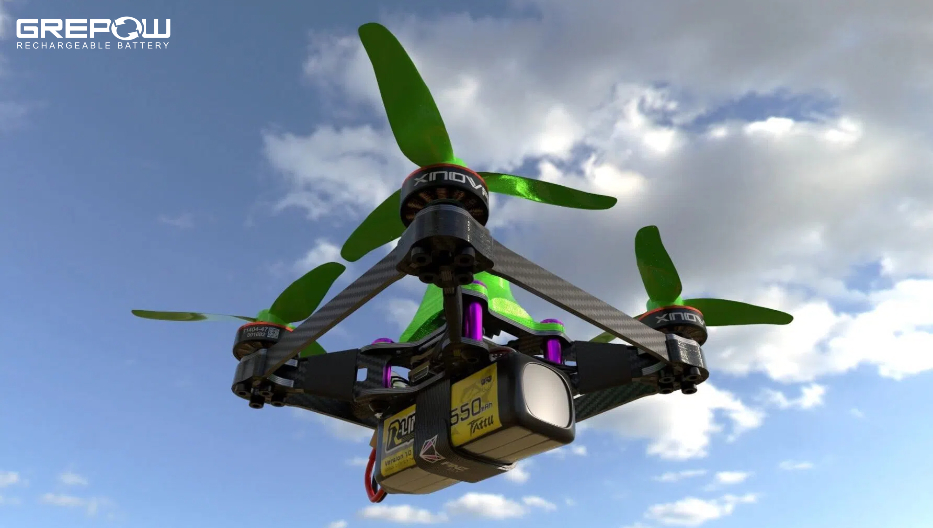
Building an FPV Drone: A Deep Dive into the Technology
2025-06-30 -
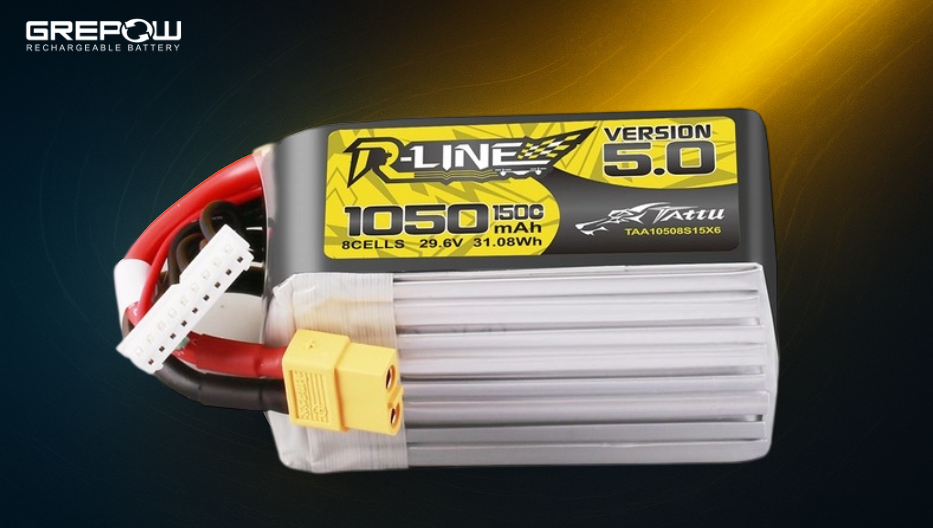
What is an 8S LiPo Battery?
2025-06-20
Related products
-
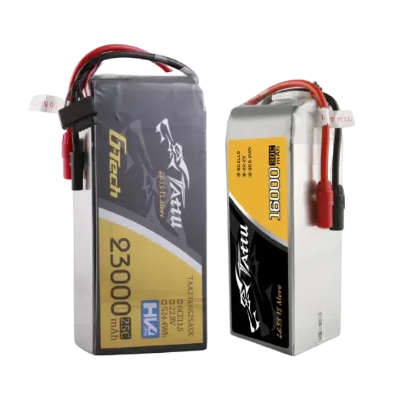
Tattu 6S LiPo Drone Battery Series
-
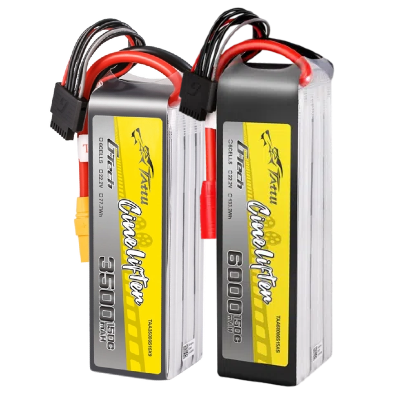
Grepow Cinelifter Series FPV Battery Pack for X8 Drones
-

Tattu 6S 4500mAh 22.2V 25C Lipo Drone Battery


